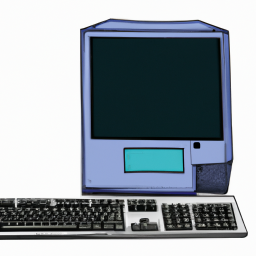How to Boot into Safe Mode in Windows 8
Booting into Safe Mode in Windows 8 doesn't have to be intimidating. With our easy-to-follow guide, you'll be in safe mode in no time!

Booting into Safe Mode in Windows 8 is a great way to diagnose and troubleshoot any issues that may be preventing your computer from running smoothly. Safe Mode is a special diagnostic mode that can be used to help identify and fix problems with your computer. It runs with a minimal set of system files and drivers, allowing you to troubleshoot any potential problems without risking any data loss.
In this article, we’ll explain how to boot into Safe Mode in Windows 8.
Step 1: Access the Advanced Startup Options Menu
The first step to booting into Safe Mode is to access the Advanced Startup Options menu. To do this, open the Charms bar by moving the mouse cursor to the upper or lower right corner of the screen, or by pressing the Windows + C key combination.
Once the Charms bar has opened, select the “Settings” option and then select “Change PC Settings”. This will open the PC Settings window.
In the PC Settings window, select the “General” option and then scroll down to the “Advanced startup” section. Click on the “Restart Now” button to access the Advanced Startup Options menu.
Step 2: Select Troubleshoot
Once you’ve accessed the Advanced Startup Options menu, you’ll need to select the “Troubleshoot” option. This option will allow you to access the various troubleshooting tools and options available in Windows 8.
Step 3: Select Advanced Options
Once you’ve selected the “Troubleshoot” option, you’ll be presented with a list of options. Select the “Advanced Options” option to access the additional troubleshooting options.
Step 4: Select Startup Settings
Once you’ve selected the “Advanced Options” option, you’ll be presented with a list of additional options. Select the “Startup Settings” option to access the startup settings.
Step 5: Select Enable Safe Mode
Once you’ve selected the “Startup Settings” option, you’ll be presented with a list of startup settings. Select the “Enable Safe Mode” option to boot into Safe Mode.
Once you’ve selected the “Enable Safe Mode” option, your computer will reboot and start in Safe Mode. You can then use the Safe Mode environment to troubleshoot and diagnose any issues with your computer.
Conclusion
Booting into Safe Mode in Windows 8 is a great way to diagnose and troubleshoot any issues that may be preventing your computer from running smoothly. In this article, we’ve explained how to boot into Safe Mode in Windows 8. We hope this article has been helpful and that you’re now able to troubleshoot any issues with your computer.








Terms of Service Privacy policy Email hints Contact us
Made with favorite in Cyprus